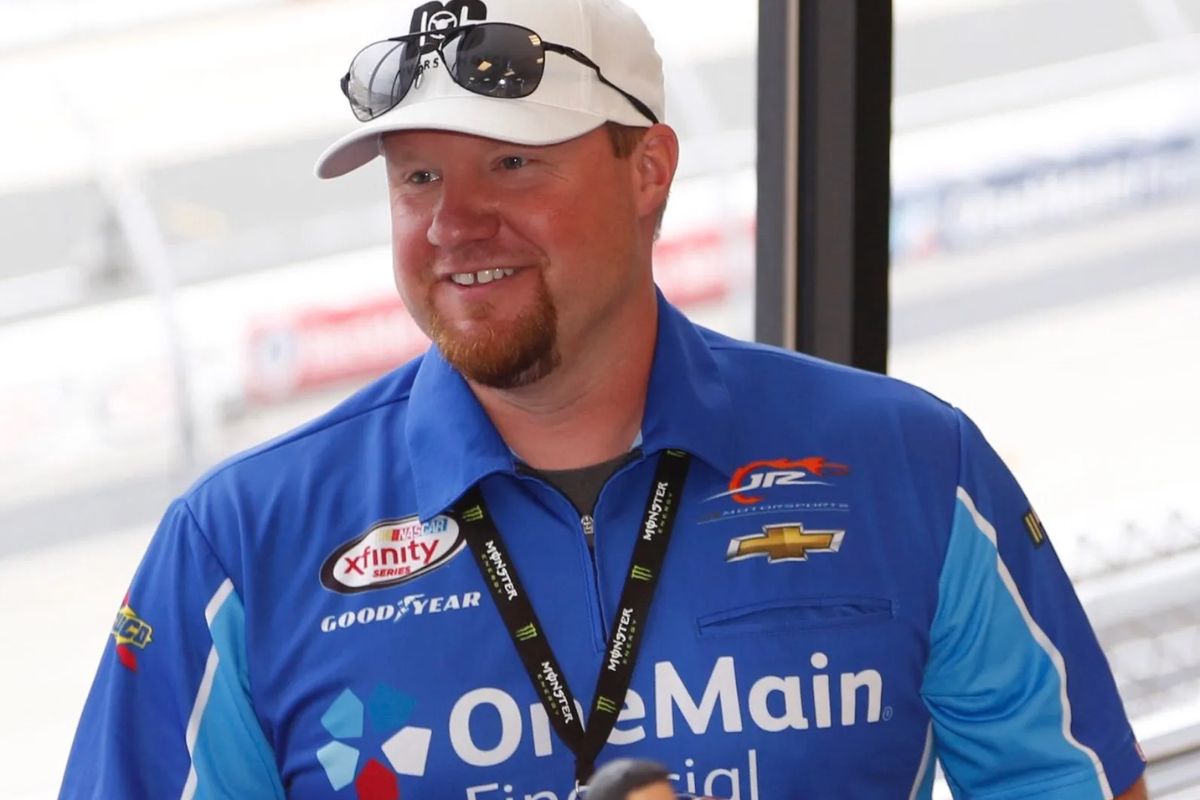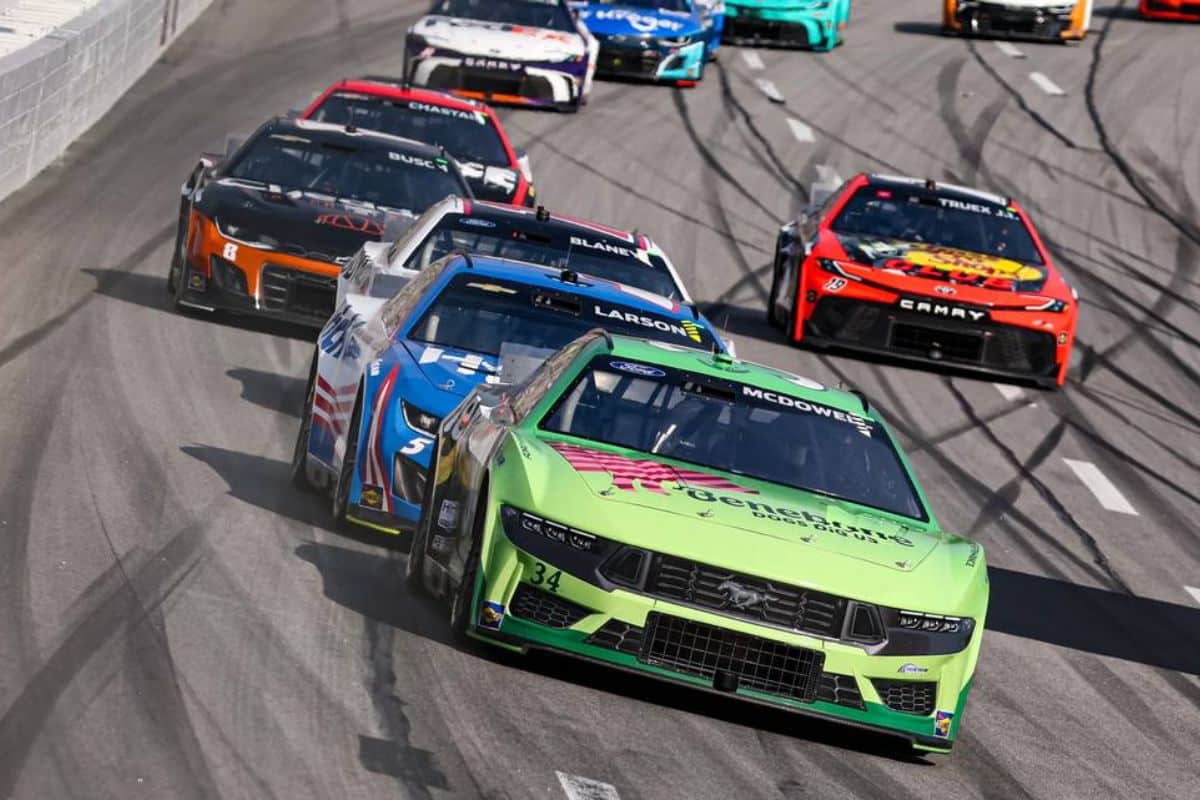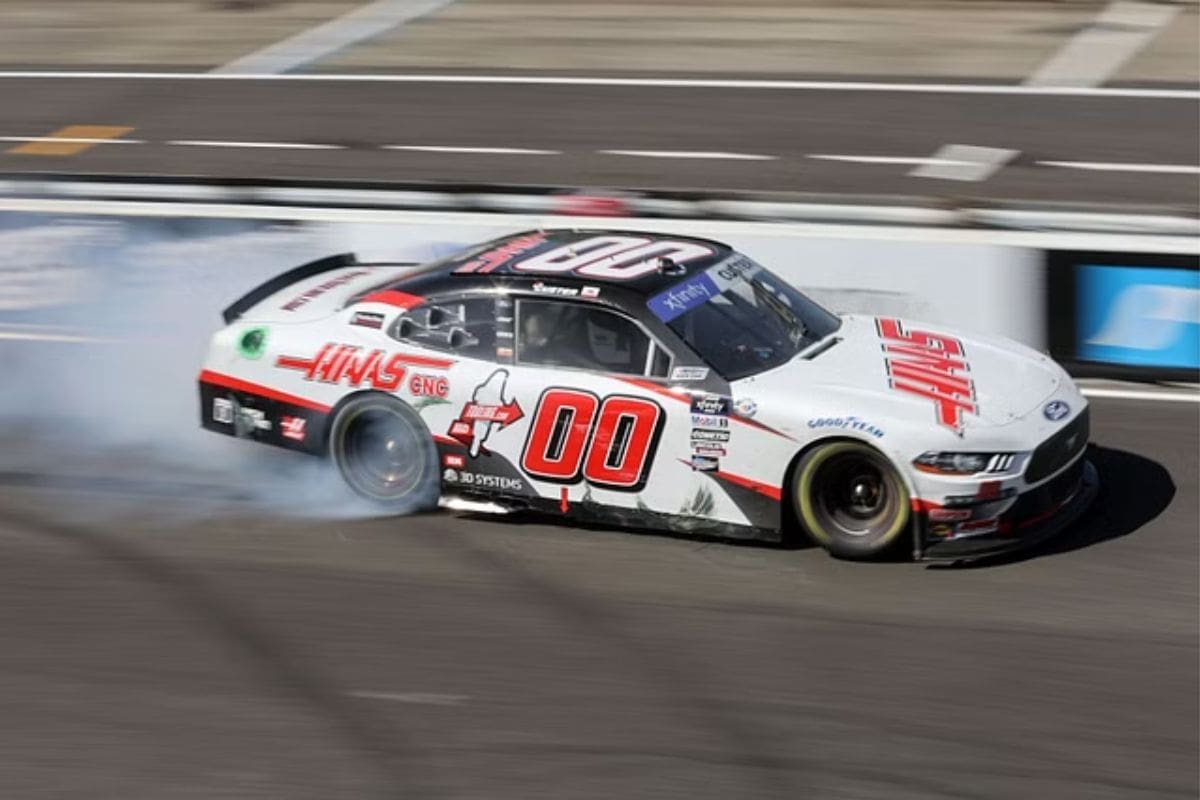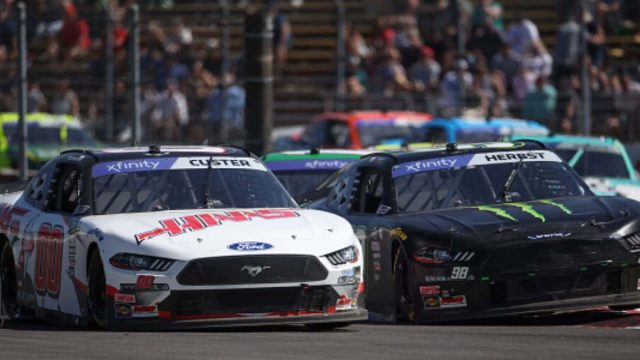Brett Griffin Reveals Ford’s 60M Dollar Role: In an eye-opening disclosure, Brett Griffin highlighted Ford’s massive $60 million withdrawal from Stewart-Haas Racing, marking a significant turning point in the team’s financial stability. Griffin’s disclosure points to the critical role that major sponsorship and partnerships play in sustaining competitive operations in NASCAR. With Ford’s exit, SHR faced unprecedented financial strain, showing the broader challenges within the racing industry. This raises compelling questions about the future of SHR and the domino effects on NASCAR’s competitive landscape, prompting an in-depth examination of the intricate dynamics at play.
Key Highlights
- Brett Griffin disclosed Ford’s $60 million contribution to SHR’s financial stability before their partnership ended.
- Ford’s withdrawal left a significant $60 million gap, contributing to SHR’s financial instability and eventual collapse.
- The $60 million from Ford was crucial for SHR’s operational and competitive capabilities.
- Brett Griffin highlighted the critical role of Ford’s $60 million in SHR’s budget and strategic planning.
- Losing Ford’s $60 million support led to SHR’s struggle in maintaining high-value sponsorships and competitive performance.
Introduction to SHR’s Demise
The sudden collapse of Stewart-Haas Racing (SHR) in 2025 marks a significant and unexpected shift in the landscape of motorsports. This development, which reverberated through the racing community, has left fans and industry insiders grappling with the reality that one of NASCAR’s stalwarts has met an untimely end.
The shockwaves from this closure are not confined to the spectator stands; they have profoundly impacted the drivers, crew members, mechanics, and analysts who dedicated themselves to the team’s success.
At the heart of SHR’s operations was Tony Stewart, a luminary in the racing world whose evolution from driver to team owner was hailed as a masterstroke. Stewart’s leadership was instrumental in fostering a competitive spirit at SHR, making the team’s sudden disintegration even more bewildering.
The general expectation was that SHR might be downsizing by selling off one or two charters. However, the brutal reality unfolded differently, with employees exiting a fateful meeting only to find themselves unemployed for the upcoming season.
The collapse of SHR is a multifaceted issue that hints at deeper financial and operational strains. While the details of these strains remain covered in mystery, it is clear that the dissolution was not a sudden decision but rather the result of underlying troubles. For a team that once demonstrated the skills of elite drivers and cutting-edge technology, the abrupt cessation of operations has introduced a void in NASCAR’s competitive arena.

Brett Griffin’s Anticipation of SHR’s Closure
Brett Griffin, an experienced racing analyst, had long foreseen the eventual collapse of Stewart-Haas Racing, attributing it to underlying financial instabilities and strategic missteps. His predictions stood in stark contrast to the shock expressed by many within the industry, including veteran driver Kevin Harvick. Harvick’s disbelief was noticeable, as he remarked,
“It’s unbelievable to me that we went from 4Ever to 4Ward to 4Sale in 6 months.”
Griffin’s foresight was based on a detailed analysis of SHR’s operational and financial trends. He observed several warning signs that suggested the team’s unsustainable trajectory. Among the critical factors he considered were:
- Financial Instabilities: Griffin identified recurring financial issues that plagued SHR’s operations, setting the stage for eventual collapse.
- Strategic Missteps: He noted numerous strategic errors, including questionable investments and poor sponsorship deals, that compounded the team’s woes.
- Management Turmoil: Internal disagreements and management changes disrupted the consistency and direction of the team, further exacerbating their problems.
- Competitive Decline: SHR’s performance on the track had been waning, creating a negative feedback loop that deterred potential sponsors and partners.
Griffin’s analysis painted a clear, albeit grim, picture of SHR’s future. His insights provided a roadmap of the impending downfall, revealing a pattern that many in the industry, including Harvick, failed to recognize until it was too late. His ability to anticipate the team’s closure highlights the importance of a meticulous approach to understanding the complexities of racing team management.
Factors Leading to SHR’s Downfall
Acknowledging Brett Griffin’s anticipation of Stewart-Haas Racing’s closure, it is imperative to examine the specific factors that contributed to the team’s downfall. Griffin said that Gene Haas did not have any support from an Original Equipment Manufacturer (OEM) when he first joined the sport. It was Tony Stewart joining the team that made it possible.
The initial establishment of SHR, which was heavily reliant on Stewart’s strategic moves and preference for Chevrolet. Stewart’s shift from Joe Gibbs Racing, where he had engaged with Toyota, back to Chevrolet for SHR established a robust foundation. This alliance with Chevrolet facilitated SHR’s early successes and resulted in a championship win with Kevin Harvick in 2014.
However, as the years progressed, several critical factors began to reduce SHR’s stability. To start with, the dynamic and competitive nature of NASCAR demanded continuous adaptation and innovation. SHR’s initial success, largely attributed to strong partnerships and a solid driver lineup, began to wane as other teams advanced technologically and strategically. The reliance on veteran drivers, while initially advantageous, gradually became a liability as emerging talents in rival teams demonstrated superior performance.
Moreover, internal management challenges and strategic misalignments further aggravated SHR’s vulnerabilities. The departure of key personnel and fluctuating leadership dynamics strained the team’s cohesion and operational efficiency. The evolving sponsorship landscape also played a significant role. Securing and maintaining high-value sponsorship deals became increasingly difficult, affecting the financial sustainability needed to compete at the highest level.

Ford’s Departure from SHR
Despite a profitable $60 million deal with Ford in 2017, Stewart-Haas Racing’s fortunes began to decline shortly after the manufacturer elected to discontinue their partnership. This strategic decision by Ford marked a turning point for SHR, triggering a series of challenges that the team struggled to overcome. Brett Griffin highlighted this critical moment as the beginning of SHR’s downward spiral.
“They switched over to the Ford brand. They got a big money deal. I mean, we remember hearing and I don’t know how many years this term was, but we remember hearing a $60 million deal and it’s like ‘Holy cow, this is an, obviously Ford wants Stewart-Haas racing badly’. Well, obviously Ford elected not to continue their OEM relationship with Gean Haas, Tony Stewart, Stewart Haas racing. That’s when the end started coming.” – (Griffin)
- Brand Alignment Issues: Shifting from Chevrolet to Ford involved a thorough overhaul of the team’s operations, from engineering to marketing. When Ford pulled out, SHR faced the challenging task of realigning their brand strategy yet again, which was both costly and time-consuming.
- Loss of Competitive Edge: The technical support and expertise provided by Ford were integral to SHR’s competitive performance. Without this backing, the team’s on-track performance suffered, leading to a decline in race wins and standings.
- Team Morale and Stability: Stability within a racing team is essential for maintaining high morale and performance. The uncertainty and disruption caused by Ford’s exit inevitably affected the team’s cohesiveness and drive, further increasing their decline.
Analysis of SHR’s Decline and Conclusion
The decline of Stewart-Haas Racing can be attributed to a combination of factors that emerged following Ford’s departure, compounded by internal and external challenges that the team struggled to navigate. The shift to the Next-Gen era has proven particularly challenging for SHR, as performance metrics have noticeably dipped, reflecting a broader trend also affecting Ford, which finished last in the manufacturers’ standings over the past three years.
Other Ford teams, like Front Row Motorsports and RFK, seem more focused on NASCAR. However, Tony Stewart and Gene Haas appear more interested in NHRA and F1, respectively.
One of the most significant blows to SHR has been the impending departure of Kevin Harvick, the team’s stalwart driver, at the end of 2023. Harvick’s exit not only removes a highly skilled and experienced driver but also diminishes the leadership and stability he brought to the team.
This void is aggravated by the migration of multiple sponsors, most notably Anheuser-Busch, to competitors like Ross Chastain at Trackhouse Racing. Such losses emphasize the financial and reputational challenges SHR faces in attracting and retaining important partnerships.
The compounded effect of these issues suggests a systemic decline, driven by both the absence of Ford’s support and the internal difficulties in adapting to new regulatory and technological landscapes.

News in Brief: Brett Griffin Reveals Ford’s 60M Dollar Role
The confirmation of Ford’s $60 million withdrawal from Stewart-Haas Racing serves as a crucial example of the intricate financial dependencies within NASCAR. Brett Griffin’s disclosure highlights the fundamental role of sponsorship and partnerships in maintaining competitive viability.
The financial instability following Ford’s exit emphasizes the broader challenges teams face in the sport’s high-stakes environment. This case shows the delicate balance required to sustain operations and the significant impact of losing key financial contributors.
Also Read: Brett Griffin Takes Aim at Ryan Blaney With Brutal Reality Check
